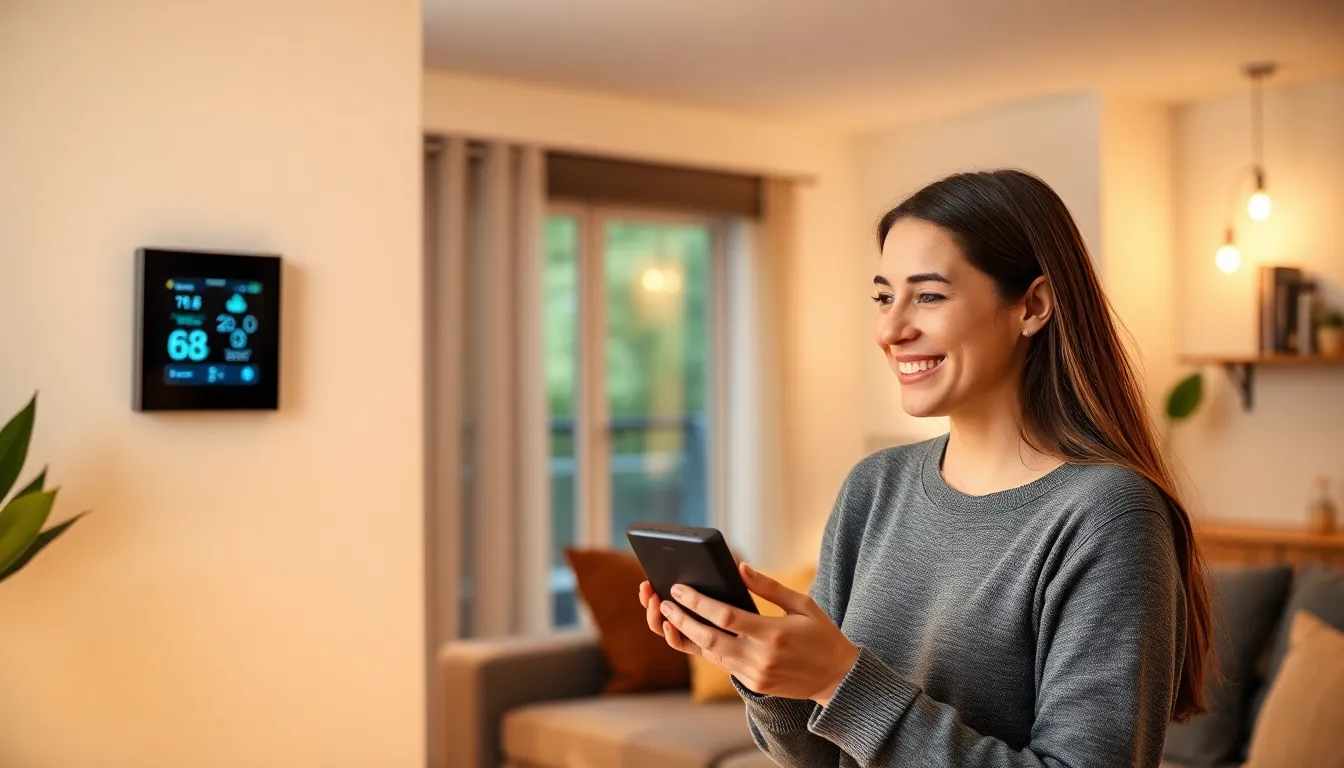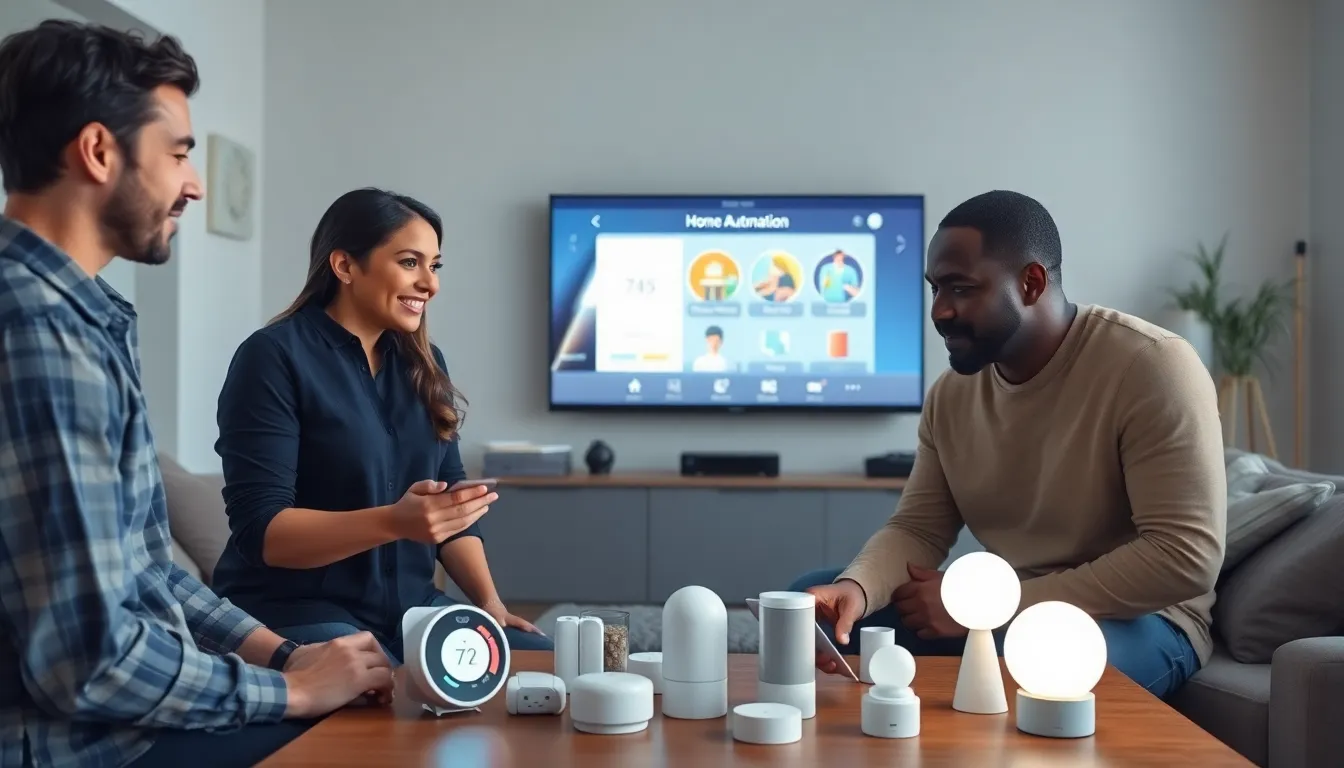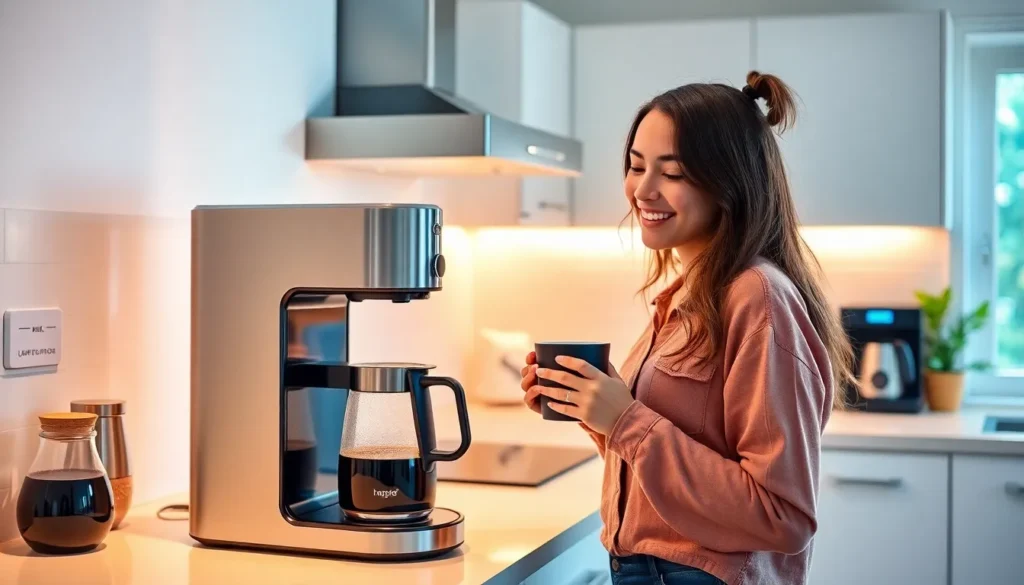Imagine walking into your home and having the lights dim, music start playing, and the thermostat adjust—all without lifting a finger. Sounds like magic, right? Welcome to the world of smart homes, where technology transforms everyday living into a seamless experience. But let’s be honest: turning your home into a tech-savvy haven can feel like trying to solve a Rubik’s Cube blindfolded.
Fear not! With the right tips up your sleeve, he or she can easily navigate the maze of gadgets and gizmos. From choosing the best devices to setting up a user-friendly system, these smart home tips will help anyone turn their humble abode into a futuristic paradise. So grab a snack, kick back, and get ready to unlock the potential of your home—because who wouldn’t want a house that listens better than their teenager?
Table of Contents
ToggleEssential Smart Home Tips
Creating a smart home involves thoughtful planning and budgeting. Following these tips simplifies the transition into a smart living environment.
Start with a Plan
Mapping out the smart devices is crucial. Identify specific goals such as energy savings, enhanced security, or convenience. Listing must-have features helps in selecting compatible devices. Prioritizing areas like lighting, thermostats, and security systems ensures a well-rounded approach. Researching compatible systems allows for smoother integration later. Arming oneself with knowledge about various ecosystems, such as Amazon Alexa or Google Home, aids in making informed decisions.
Set a Budget
Establishing a budget impacts overall smart home spending. Determine how much funds are available for devices, installations, and subscriptions. Considering both initial costs and ongoing expenses provides a clearer financial picture. Pricing ranges vary widely across smart devices, so it’s essential to compare costs and quality. Investing in high-quality essentials now prevents costly replacements later. Allocating a portion of the budget for future upgrades encourages adaptability and growth in the smart home setup.
Choosing the Right Devices

Selecting appropriate devices for a smart home significantly impacts overall functionality and user satisfaction. Assessing specific requirements aids in making informed choices.
Compatible Ecosystems
Compatibility with existing ecosystems ensures seamless integration. Popular platforms include Amazon Alexa, Google Assistant, and Apple HomeKit. Devices designed for these ecosystems often offer better functionality. For instance, incorporating smart bulbs with an Amazon Echo enables voice control capabilities. It’s essential to verify product compatibility before making a purchase to avoid future integration issues.
Key Features to Consider
Prioritize essential features when evaluating smart home devices. Look for energy efficiency, user-friendly interfaces, and strong security protocols. Energy-efficient devices help reduce electric bills while contributing to sustainability. User-friendly interfaces enhance overall accessibility. Strong security ensures personal data remains protected, which is crucial with smart devices. Always check for software update support, as maintaining security and performance over time improves device longevity.
Enhancing Security
Maximizing security within a smart home involves innovative technology and strategic planning. Smart locks and cameras provide essential layers of protection.
Smart Locks and Cameras
Smart locks enable convenient access control, allowing users to monitor door entry through mobile apps. These devices offer customizable access, enabling temporary codes for visitors. Including features like remote locking adds convenience and enhances security. Smart cameras allow for real-time surveillance and motion detection, alerting users to unusual activity. High-definition video and night vision capabilities improve monitoring quality. Combining locks and cameras creates a cohesive security network that protects residences effectively.
Alarm Systems
Modern alarm systems integrate with smart home technology, providing enhanced security features. These systems often include sensors for doors and windows that trigger alarms upon unauthorized entry. Remote monitoring options keep users informed about their home’s security status, even when away. Many alarm systems support automation, allowing integration with lighting to simulate occupancy and deter intruders. Users can choose systems with professional monitoring services for an added layer of safety, ensuring prompt emergency response as needed.
Energy Efficiency Tips
Implementing energy-efficient practices in a smart home significantly reduces utility bills while promoting sustainability. Below are key strategies focused on smart technology.
Smart Thermostats
Smart thermostats optimize heating and cooling, adapting to user preferences and schedules. Devices like the Nest or Ecobee learn habits over time and adjust temperatures automatically. Homeowners save approximately 10 to 15 percent on heating and cooling costs by using these devices. Remote access through mobile applications allows temperature adjustments when away from home. Scheduling features enable efficient energy use by reducing heating or cooling during inactive hours. Additionally, many models provide energy reports, helping users monitor consumption and identify potential savings.
Lighting Automation
Lighting automation enhances energy efficiency by providing control over home illumination. Smart bulbs and dimmers allow users to schedule lighting based on daily routines. For instance, programming lights to turn off at specific times helps eliminate wasted energy. Additionally, motion sensors can automatically activate lights when someone enters a room, ensuring they’re only on when needed. Homeowners can also utilize color-changing bulbs to create ambiance while optimizing energy use. Furthermore, integrating lighting systems with voice assistants simplifies control, making adjustments seamless and efficient.
Maximizing Convenience
Integrating smart home technology effectively enhances day-to-day living. Employing smart devices provides seamless management of various tasks.
Voice Assistants
Voice assistants streamline interactions within a smart home. Devices like Amazon Alexa, Google Assistant, and Apple Siri enable users to control lighting, music, and thermostats with simple voice commands. They also respond to inquiries, provide reminders, and schedule events. Installing compatible smart devices allows for enhanced functionality, making everyday tasks feel effortless. Their integration promotes multitasking because hands-free control frees users to focus on other activities.
Routine Automation
Routine automation simplifies daily life by creating schedules for smart devices. Homeowners can program devices to operate at specific times, optimizing energy consumption and convenience. For instance, smart lights can turn on at sunset, ensuring safety and accessibility. Thermostats adjust temperatures before occupancy, providing comfort. Custom routines can integrate multiple devices to execute commands in unison, enhancing user experience. Homeowners adopting these features often report increased satisfaction, as they save time and elevate living standards.
Adopting smart home technology opens up a world of possibilities for enhancing daily life. With careful planning and the right devices, anyone can create a seamless and efficient living environment. Prioritizing energy efficiency and security not only leads to cost savings but also fosters peace of mind.
Embracing automation and voice control simplifies everyday tasks, making life more convenient. By staying informed about the latest innovations and continuously evaluating needs, homeowners can ensure their smart homes evolve with them. Ultimately, investing in a smart home is an investment in a smarter, more comfortable future.




